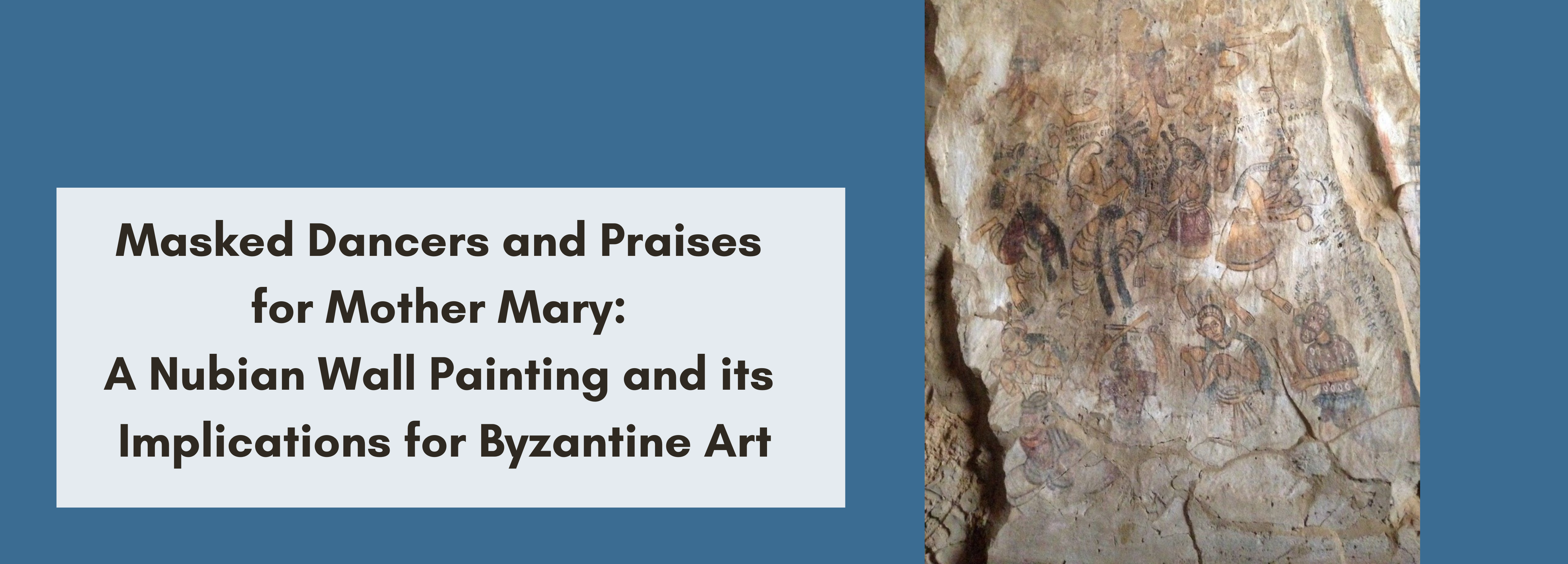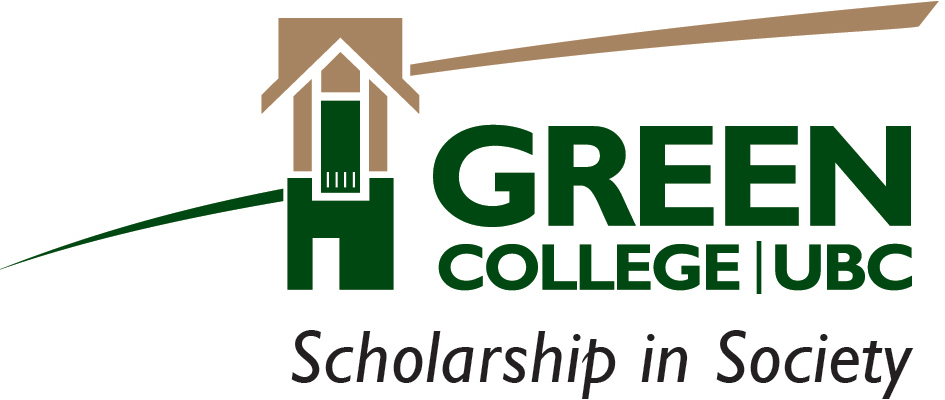Masked Dancers and Praises for Mother Mary: A Nubian Wall Painting and its Implications for Byzantine Art History

-
Andrea Achi, Assistant Curator, The Metropolitan Museum of Art
Coach House, Green College, UBC, and livestreamed
Monday, October 24, 5-6:30pm, with reception to followin the series
Ways of Seeing Byzantine Art and Material Culture -
In the Southwest annex of the Monastery in Dongola, Nubia, a painting of masked dancers playing musical instruments abuts a votive image of the Virgin Hodegetria (She who points the way). Unlike typical Byzantine depictions of this iconographic type, where the Virgin points to the Child Jesus as a source of salvation, this representation of Mary gestures towards the group of dancers. Surrounding the scene, Old Nubian inscriptions evoke Marian prayers on behalf of the Queen Mother in the event of a future king’s birth.
This talk Andrea Achi will discuss this scene, its Greek and Old Nubian inscriptions, and other textual and visual evidence pointing to a circulation of northeast and central African Christians in Nubia in the Byzantine World.
 Andrea Achi is trained as a Byzantinist, and her curatorial practice focuses on late antique and Byzantine art of the Mediterranean Basin and Northeast Africa. She holds a BA from Barnard College and a PhD from New York University. She specializes in the art and archaeology of Late Antiquity with a particular interest in illuminated manuscripts and ceramics. She has brought this expertise to bear on exhibitions like Art and Peoples of the Kharga Oasis (2017), Crossroads: Power and Piety (2020) and The Good Life (2021) at The Met and in numerous presentations and publications.
Andrea Achi is trained as a Byzantinist, and her curatorial practice focuses on late antique and Byzantine art of the Mediterranean Basin and Northeast Africa. She holds a BA from Barnard College and a PhD from New York University. She specializes in the art and archaeology of Late Antiquity with a particular interest in illuminated manuscripts and ceramics. She has brought this expertise to bear on exhibitions like Art and Peoples of the Kharga Oasis (2017), Crossroads: Power and Piety (2020) and The Good Life (2021) at The Met and in numerous presentations and publications.

What can we learn from the study of a distant premodern culture today? Where does the Roman polity that we call Byzantium stand within the wider medieval world, and how does its place in our imagination shape the way we study Byzantine monuments, objects and sites? This lecture series provides a venue for presenting cutting-edge and innovative research by scholars of Byzantine art, archaeology and material culture. In particular, it seeks to contribute to wider discussions across UBC, SFU, the wider academic community and the wider public about the cultural heritage and the underrepresented cultures of the medieval world before the age of European colonialism. Given the recent turn towards the Global Middle Ages in medieval studies, we have invited scholars who examine Byzantium and its material culture in an international context and acknowledge the necessity of placing the Byzantine in dialogue with other premodern societies in and beyond the Mediterranean.This academic year, Green College brings together exciting and important voices in the field of Byzantine studies to showcase the rich variety of disciplinary approaches in the field and to engage critically with a diverse range of topics.
This series is co-hosted with the SNF Centre for Hellenic Studies at Simon Fraser University.

-
Unless otherwise noted, all of our lectures are free to attend and do not require registration.
October 24, 2022
10:00 am to 11:30 am
Coach House
6201 Cecil Green Park Rd